
Darkling beetle is the common name for members of the beetle family Tenebrionidae. The number of species in the Tenebrionidae is estimated at more than 20,000 and the family is cosmopolitan in distribution.

Mecodema is a genus of large flightless ground beetle (Carabidae) endemic to New Zealand. The genus is very diverse in comparison to the other three New Zealand genera within the subtribe Nothobroscina. Mecodema is geographically widespread across both the North and South Islands, as well as numerous offshore islands, including the Three Kings Is., Poor Knights Is., Aotea and Hauturu, Kapiti Is., Stephens Is., Stewart Is., Chatham Is., Snares Is.

Eleodes is a genus of darkling beetles, in the family Tenebrionidae. They are endemic to western North America ranging from southern Canada to central Mexico with many species found along the Mexico-United States border. Some species have been introduced to Colombia. The name pinacate is Mexican Spanish, derived from the Nahuatl (Aztec) name for the insect, pinacatl, which translates as "black beetle."

Zopherus is a genus of beetles comprising 19 species. They live in the Americas and are adapted to wood-boring.
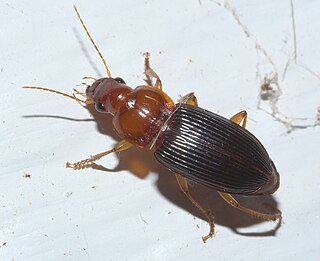
Notiobia is a genus of ground beetles in the family Carabidae. There are about 100 described species in Notiobia.
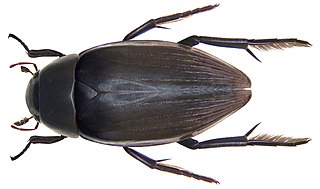
Hydrophilus is a genus of beetles in the family Hydrophilidae, the water scavenger beetles. There are 53 species in three subgenera in the genus: Hydrophilus, Dibolocelus, and Temnopterus.

Phaleria is a genus of darkling beetles belonging to the family Tenebrionidae.

Epitragini is a tribe of darkling beetles in the subfamily Pimeliinae of the family Tenebrionidae. There are more than 30 genera in Epitragini, found in the North, Central, and South America.

Neomida is a genus of darkling beetles in the family Tenebrionidae. There are about 18 described species in Neomida.

Diaperini is a tribe of darkling beetles in the family Tenebrionidae. There are about 13 genera and at least 40 described species in Diaperini.

Platydema is a genus of darkling beetles in the family Tenebrionidae. There are at least 60 described species in Platydema.

Ulomini is a tribe of darkling beetles in the family Tenebrionidae. There are more than 20 genera among Ulomini.

Blaps is a genus of darkling beetles in the family Tenebrionidae. There are more than 30 described species in Blaps, the genus being most commonly found in Eurasia and Australia, with occasional sightings elsewhere in the world.
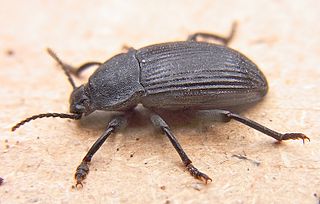
Dendarus is a genus of darkling beetles in the family Tenebrionidae. The genus is distributed from Morocco to Caucasus and exhibits a high level of diversity with 36 species, 27 of which are island endemics. Analyses of the phylogenetic relationships of 23 species from Greece and Turkey revealed 13 distinct lineages with several para- and polyphyletic cases corresponding to three major phylogroups [south/south-east Aegean ; central to north Aegean, Turkey and mainland Greece and mainland Greece ].

Phrenapatinae is a subfamily of darkling beetles in the family Tenebrionidae. There are more than 20 genera in Phrenapatinae, grouped into 3 tribes.
Alphitobiini is a tribe of darkling beetles in the family Tenebrionidae. There are about eight genera in Alphitobiini.
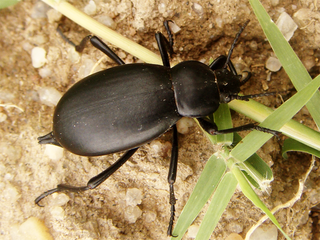
Blaptini is a tribe of darkling beetles in the family Tenebrionidae. There are more than 30 genera in Blaptini.

Platyscelidini is a tribe of darkling beetles in the family Tenebrionidae. There are about eight genera in Platyscelidini.
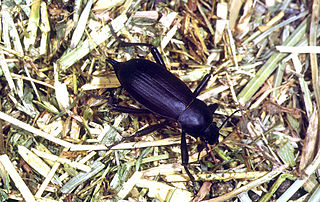
Blaps polychresta, commonly known as the Egyptian beetle, South African beetle or cellar beetle, is a species of beetle in the family Tenebrionidae. This species is a popular pet and can live up to 4-5 years. Although this species is introduced to Australia, America, it is not considered a pest, and is rather commonly found in chicken coops where the chickens feast on this species.


















